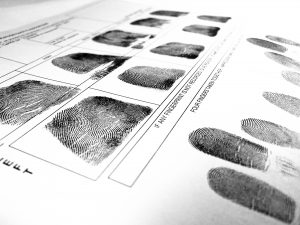New York’s New Law to Seal Criminal Records
Beginning in October 2017, New York will allow criminal convictions to be sealed. Under new Criminal Procedure Law Section 160.59, called “Sealing of certain convictions,” there are several conditions to seal criminal records, and not all criminal convictions are eligible. Further, it is important to recognize that sealing differs from expungement or dismissal, and does not erase or clear a criminal record or conviction.
In New York, there are four levels of convictions:
• Traffic infractions, like Driving While Ability Impaired (DWAI);
• Violations, like Disorderly Conduct or Harassment;
• Misdemeanors; and
• Felonies
The criminal conviction sealing law applies only to certain misdemeanors and felonies. Violations seal without a defendant having to do anything, usually after two years, unless the conviction was domestic violence-related harassment. Strangely, the traffic infraction DWAI does not seal.
Requirements to Seal Criminal Records
Under Criminal Procedure Law Section 160.59, it is possible to seal criminal records for up to two eligible convictions. Only one felony conviction may be sealed. The three most important requirements of the sealing criminal convictions law are:
1. At least 10 years must have passed from the sentencing or release from prison;
2. There cannot be current or pending criminal charges; and
3. There cannot be a more recent criminal conviction
One favorable factor under the sealing law is that if a person is convicted of several crimes for the same criminal act, then the multiple convictions are treated as a single conviction. So, although the law allows for sealing of only two convictions, a person whose entire criminal record consists of multiple convictions arising from the same incident may in effect seal their entire criminal record.
Not All Convictions are Eligible for Sealing
Several categories of the most serious crimes are disqualified from sealing. For example, all violent felony convictions are excluded under the new sealing law.
There are dozens of criminal offenses in the Penal Law that are considered violent felonies. Some examples include Assault in the First Degree or Assault in the Second Degree, Robbery in the First or Second Degree and Criminal Possession of a Weapon in the Third Degree. The violent felonies that are excluded from the sealing law are listed under Penal Law Section 70.02.
Two other broad categories that are excluded from the law to seal criminal records are convictions to any class A felony and any attempt to commit a crime that is not eligible for sealing. In addition, the following crimes are not eligible for sealing:
• Any homicide-related offense defined in Article 125 of the Penal Law;
• Any sex offense defined in Article 130 of the Penal Law;
• Any sexual performance offense defined in Article 263 of the Penal Law;
• Any conviction that requires registration as a sex offender; and
• Any conviction of conspiracy where the underlying offense is not an eligible offense
The Application Process to Seal a Criminal Conviction
The application to seal criminal records must be accompanied by several supporting documents, including the certificate of disposition for the conviction and a sworn statement of the reasons the conviction should be sealed, along with any other documents that support the argument for sealing. The entire application, along with supporting documents, is served on the District Attorney. Then, the District Attorney then has 45 days to notify the sentencing judge if there is an objection to the sealing. The sentencing judge then considers the application, supporting documents and the District Attorney’s consent or objection. The law sets forth specific standards for determining whether or not the criminal record should be sealed.
Standard for Sealing of Criminal Records
Under the new law, there is a 7-point legal standard that is applied by the sentencing judge in determining whether to seal a criminal records:
1. The time that has elapsed since the defendant’s last conviction;
2. The circumstances and seriousness of the offense for which the defendant is seeking relief, including whether the arrest charge was not an eligible offense;
3. The circumstances and seriousness of any other offenses for which the defendant was convicted;
4. The character of the defendant, including any measures that the defendant has taken toward rehabilitation, such as participating in treatment programs, work, or schooling, and participating in community service or other volunteer programs;
5. Any statements made by the victim of the offense for which the defendant is seeking relief;
6. The impact of sealing the defendant’s record upon his or her rehabilitation and upon his or her successful and productive reentry and reintegration into society; and
7. The impact of sealing the defendant’s record on public safety and upon the public’s confidence in and respect for the law
Some factors are objective. For example, if the crime for which sealing is sought is not eligible under the law, then it will be denied. Other aspects are quite subjective, like what a person has done or accomplished since the conviction and what sealing would mean to a person.
Sealing Criminal Records vs. Expungement
There are a variety of states that offer expungement of a criminal record, but New York does not. States that offer ideal expungement destroy all records relating to a criminal conviction and erase the crime itself. Sealing is different than expungement, and does not clear a criminal record. However, there are still significant advantages associated with sealing a criminal record.
 In New York, if a case is not sealed, any person may go to the courthouse where the conviction occurred and view the court’s file. Furthermore, material associated with a person’s arrest and conviction, fingerprints, arrest photos and DNA samples, remain in police.
In New York, if a case is not sealed, any person may go to the courthouse where the conviction occurred and view the court’s file. Furthermore, material associated with a person’s arrest and conviction, fingerprints, arrest photos and DNA samples, remain in police.
However, in New York, when a record of a crime is sealed, all material related to the case or conviction is destroyed. That means that fingerprints, palm cards, mugshots and arrest photos, DNA samples and destroyed. (Destroying fingerprint or DNA records won’t matter if they are already on file from a different case that is not sealed.)
Sealed criminal records cannot be viewed by the public, police, or prosecutors. There are only a few ways sealed records may be viewed, and only specific people may have access. First, sealed records may be viewed by the defendant or his or her agent. Second, the records may be available to an employer if you apply for job that involves carrying a firearm. Third, a parole officer may view sealed criminal records if the convicted person is arrested while on probation or parole. Finally, sealed records may be viewed by law enforcement or a prosecutor by a court order signed by a judge. This is a rare occurrence, and mainly occurs if a person has been arrested for a new crime that in some way is related to the sealed crime.






I’ve been absent for a while, but now I remember why I used to love this web site. Thank you, I’ll try and check back more often. How frequently you update your web site?